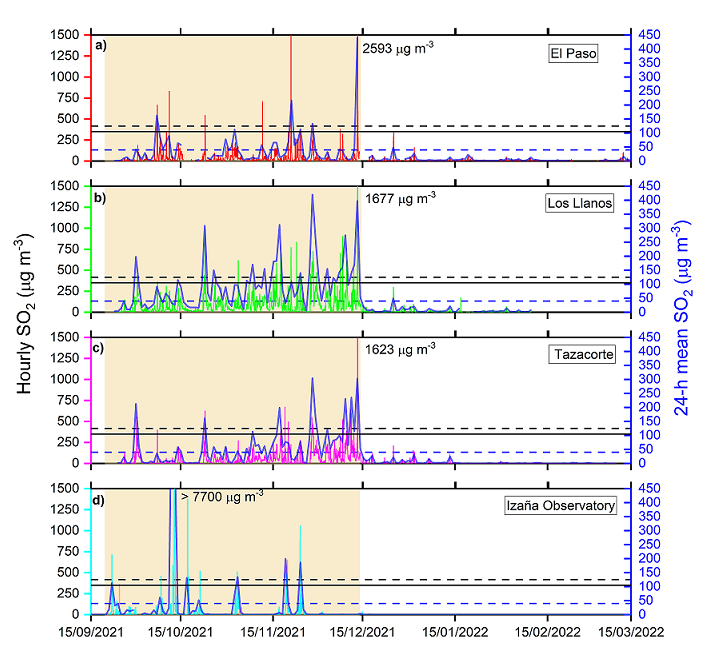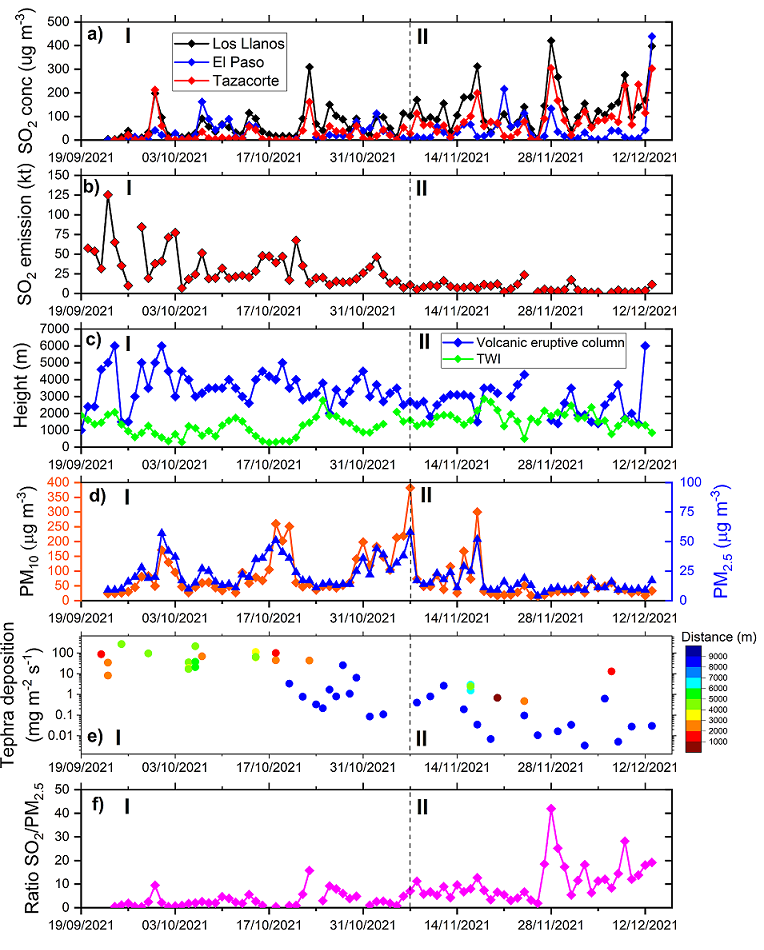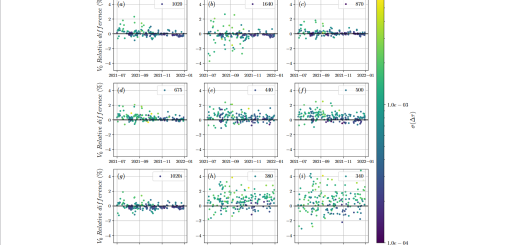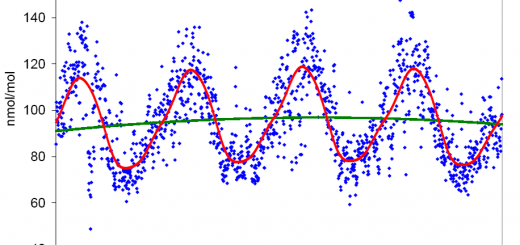“Impact of the 2021 La Palma volcanic eruption on air quality: Insights from a multidisciplinary approach” paper published in Science of the Total Environment
Clic here for spanish version
The journal Science of the Total Environment has published a new study “Impact of the 2021 La Palma volcanic eruption on air quality: Insights from a multidisciplinary approach”.
The La Palma 2021 volcanic eruption was the first subaerial eruption in a 50-year period in the Canary Islands (Spain), emitting ~1.84 Tg of sulphur dioxide (SO2) into the troposphere over nearly 3 months (19 September – 13 December 2021), exceeding the total anthropogenic SO2 emitted from the 27 European Union countries in 2019 (~1.66 Tg). In this paper, we present a comprehensive evaluation of the impact of the 2021 volcanic eruption on air quality (SO2, PM10 and PM2.5 concentrations) utilising a multidisciplinary approach, combining ground and satellite-based measurements with height-resolved aerosol and meteorological information (Figure 1).

Figure 1. Study site location. a) Satellite column integrated Sulphur Dioxide (SO2) from Copernicus Sentinel-5P TROPOMI on 1 November 2021 indicating La Palma. b) Image for 1 November 2021 obtained by the Moderate Resolution Imaging Spectroradiometer (MODIS) sensor aboard the Terra satellite showing the western Canary Islands including La Palma and Tenerife, the location of the volcanic eruption is marked with a red star. The location of the Izaña Observatory (IZO), Santa Cruz Observatory (SCO) and the El Rio regional background measurement site are marked with yellow stars. c) Plan view of La Palma indicating the location of the volcanic eruption (blue circle), the lava flow on 17/12/2021 marked in dark red, the air-quality measurement sites, (1) El Paso, (2) Los Llanos de Aridane, (3) Tazacorte, and (4) the AEMET meteorological station (C126A). In addition, the permanent Air Quality Monitoring Network measurement sites on the eastern side of La Palma are also shown, (5) San Antonio, (6) La Grama, (7) El Pilar and (8) Las Balsas. The red and yellow lines mark roads. Credits: a) Copernicus Sentinel-5P TROPOMI (https://maps.s5p-pal.com/so2/), b) We acknowledge the use of imagery provided by services from NASA’s Global Imagery Browse Services (GIBS), part of NASA’s Earth Observing System Data and Information System and c) Instituto Geográfico Nacional (IGN) (https://ign-esp.maps.arcgis.com/).
High concentrations of SO2, PM10 and PM2.5 were observed in La Palma (hourly mean SO2 up to ~2600 μg m−3) and also sporadically at ~140 km distance, at the Izaña Observatory in Tenerife (hourly mean SO2 > 7700 μg m−3) in the free troposphere (Figure 2), exceeding by several orders of magnitude the normally low background concentrations of SO2.

Figure 2. Concentrations of SO2 at three measurement sites in La Palma: a) El Paso, b) Los Llanos and c) Tazacorte and d) Izaña Observatory, the free troposphere site in Tenerife (15/9/2021–15/3/2022). The left axis indicates hourly mean concentrations and the right axis daily (24-h) mean concentrations. The black horizontal and dashed lines show the European Commission (EC) hourly (350 μg m−3) and daily (24-h mean) (125 μg m−3) air quality thresholds, respectively. The blue dashed line shows the WHO 2021 24-h mean SO2 air quality guideline (40 μg m−3). The shaded area marks the volcanic eruption period (19/9/2021–13/12/2021).
The Canary Islands are located in the sub-tropical eastern North Atlantic, and this region has some distinct features which affected the air quality impacts of the La Palma volcanic eruption, including for example the strong vertical stratification of the lower troposphere. In addition, this region is in the pathway of the long-range transport of mineral dust exported from the Sahara-Sahel region to the North Atlantic. Volcanic aerosols and desert dust aerosols both impacted the lower troposphere in a similar height range (~ 0 – 6 km) during the eruption, providing a unique opportunity to study the combined effect of both natural phenomena.
The impact of the La Palma 2021 volcanic eruption on SO2 and PM concentrations was strongly influenced by the substantial magnitude of volcanic emissions, by the height at which the volcanic gases and aerosols were released and also by the strong vertical stratification of the atmosphere in this region and its seasonal dynamics. As a consequence of these modulating factors, SO2 concentrations at ground-level in La Palma increased during the eruption (Fig. 3a), showing an opposite temporal trend to the SO2 volcanic emissions, which decreased with time as the eruption progressed (Fig. 3b).

Figure 3. Temporal evolution during La Palma volcanic eruption (19/9/2021–13/12/2021) of a) Daily (24-h mean) SO2 concentrations in La Palma, b) Daily SO2 volcanic emissions (kt) estimate provided by TROPOMI (credit: ESA, MOUNTS), c) Volcanic eruptive column top height and Trade Wind Inversion (TWI) base height (m a.s.l.). d) Daily (24-h mean) PM10 and PM2.5 concentrations in Los Llanos. e) Tephra deposition (mg m−2 s−1) recorded sporadically in various sites in the Aridane Valley and continuously in Tazacorte measurement site (24/10/2021–14/12/2021) (note logarithmic scale on the Y axis) and f) SO2/PM2.5 mass ratio. The vertical dashed line marks the date 7/11/2021 and separates the volcanic eruption into two phases (I and II).
The results of this study are relevant for emergency preparedness for future volcanic eruptions in the subtropical region and for all international areas at risk of volcanic eruptions; a multidisciplinary approach is key in understanding the processes by which volcanic eruptions affect air quality and to mitigate and minimise impacts on the population.
This study was conducted by a scientific team from the Izaña Atmospheric Research Center (AEMET) in collaboration with the Delegation of AEMET in the Canary Islands and many other national and international organisations including: the Department of Ecological Transition, Fight against Climate Change and Territorial Planning (Canary Islands Government); Palas GmbH (Germany); TRAGSATEC; Sieltec Canarias; the Department of Life and Earth Sciences, Institute of Natural Products and Agrobiology (IPNA-CSIC), La Laguna University; Universitat Politècnica de Catalunya (UPC) and the National Institute for Aerospace Technology (INTA).
For more details about this work please refer to:
Milford, C.; Torres, C, Vilches, J.; Gossman, A.K; Weis, F.; Suárez-Molina, D.; García, O.E.; Prats, N.; Barreto, Á.; García, R.D.; Bustos, J.J.; Marrero, C. L.; Ramos, R.; Chinea, N.; Boulesteix, T.; Taquet, N.; Rodríguez, S.; López-Darias, J.; Sicard, M.; Córdoba-Jabonero, C.; Cuevas, E. Impact of the 2021 La Palma volcanic eruption on air quality: Insights from a multidisciplinary approach, Science of The Total Environment, Volume 869, 2023, 161652, ISSN 0048-9697, https://doi.org/10.1016/j.scitotenv.2023.161652.
The paper can be downloaded from: https://doi.org/10.1016/j.scitotenv.2023.161652







